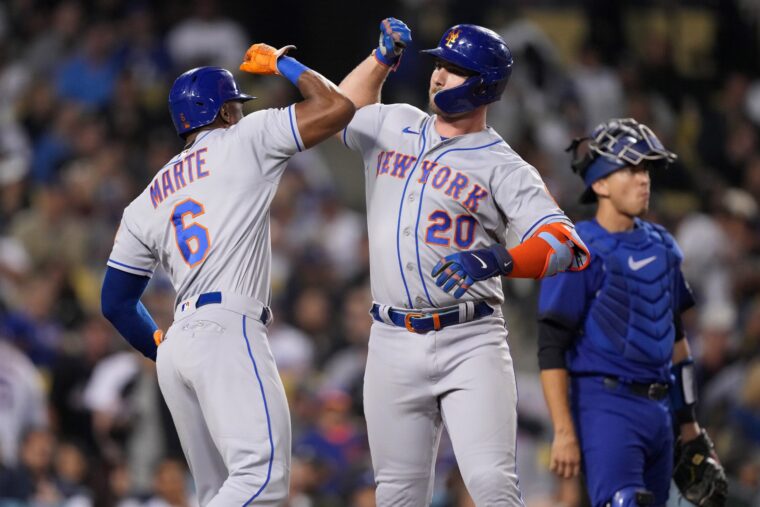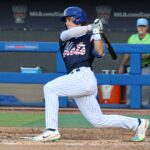
Kirby Lee-USA TODAY Sports
Remember the Major League Baseball lockout? You know, the one that lasted 99 days, and delayed the start of the 2022 season? One of the key topics the two sides haggled over for more than three months was competition in the game, and, more specifically, the need to reduce tanking. As the 2022 season enters its second third, let’s take a look at where competition in the game stands.
This year, going into the games of June 6, there are 12 teams (40%) in baseball with records over .500. Last year on this date, 16 teams (53%) were over the .500 mark. It certainly would appear that the Oakland Athletics (currently 20-36) and Cincinnati Reds (18-35) decided to sell off their better players (Mark Canha, Sonny Gray, Chris Bassitt, Jesse Winker, Eugenio Suarez, etc.) and write off 2022. In addition, eight of 30 teams have payrolls less than $100 million. This is exactly what the Major League Baseball Players’ Association was trying to avoid under a new Collective Bargaining Agreement.
Player representative and union leader Andrew Miller spoke about tanking in February of 2022, while the negotiations were ongoing. From Emma Baccellieri in Sports Illustrated:
“I think tanking is something you’ve probably heard a lot from us. It’s horrible to tell your fans before the season even starts that you’re not going to compete for a while. That’s not putting a good product on the field. Who wants to go watch a game when ownership has told you that they’re not going to try? And for multiple years, in a lot of cases. I think there are ways that, unfortunately, we have to kind of save them from themselves and convince them. Because the players go out there, and they try to win, every pitch, every at-bat, every game, and to be a player on a team that’s been told that winning isn’t important, it’s an issue. So if we can correct some of that stuff through little things in the CBA—or, I don’t know if I want to call them little things, but through the CBA, through these negotiations, then we need to do so.”
With the addition of two more playoff teams in 2022, teams hovering near .500 remain in the hunt, at least for now, for a playoff spot. For example, the Boston Red Sox, at 27-27, are just four games out of a wildcard spot. In the National League, the Atlanta Braves, at 28-27, find themselves two games out in the wildcard race at this early juncture. At this point, the expanded 12-team playoff field is keeping things interesting for a few teams that have not gotten off to good starts.
Another concern at the early stage of the new CBA is that baseball is becoming a game of haves and have-nots. Going back to payroll, the highest, according to SportTrac, are as follows:
- New York Mets, $260, 222,000
- Los Angeles Dodgers, $260,002,000
- New York Yankees, $247,653,000
- Philadelphia Phillies $233, 209,000
- San Diego Padres, $217,967,000
- Boston Red Sox, $201,436,000
Four of the teams above are in the top five for best records in the game. (The Houston Astros are tied for the third best record and are 10th in payroll). The early evidence is that teams are still tanking, and teams are not spending on payroll to the levels the MLBPA was seeking in order to enhance competition.
What is being done to address these issues?
When the lockout was resolved, one of the key agreements was around a draft lottery to begin in 2023. Here is how it will work, from Jim Callis of MLB.com:
“Beginning in 2023, the first six choices will be determined by lottery rather than by the reverse order of the previous year’s standings. The teams with the three worst records from the previous season will have the best chance (16.5 percent each) to get the No. 1 overall pick via the lottery, which will include all 18 non-postseason clubs. The other teams will have declining percentages in reverse order of their records, down to 0.23 percent for the non-playoff club with the highest winning percentage.”
Perhaps the draft lottery will work to reduce the tanking incentive. The payroll issue is another story. While salary floors (with penalties) were discussed early in the CBA negotiations, they did not make their way into the final agreement. With more money going to each team before a ticket is sold (primarily from the new streaming services, Peacock and Apple TV+), there really is no way to ensure that this revenue is spent on players, to make more teams competitive each season.
The players expressed concern about expanded playoffs, that the new format may work to dissuade spending and the need for more teams to invest in order to compete. Early on, those concerns seem to be manifesting. Some teams are still tanking, spending on payroll is not going up significantly across the game.
The new draft structure may be a step in the right direction (time will tell after a couple of years), but baseball has an issue with competition, and the biggest issue is that the game may become sharply divided along team revenue lines. The higher threshold for the Competitive Balance Tax may only exacerbate the issue of larger-market teams consistently out leveraging smaller-market teams.
It’s early in the CBA. However, a future world of teams tanking, and World Series winners being an exclusive club of large-market teams is not good for the game. Maybe the CBA did not go far enough on these issues.
At least the New York Mets are finally acting as one of those larger-market teams.















